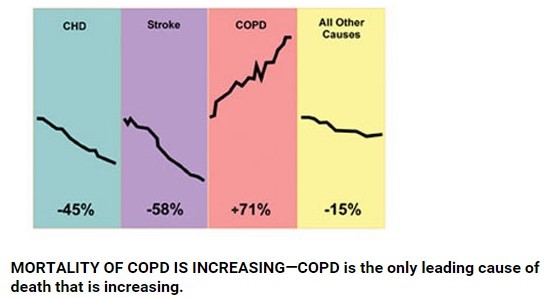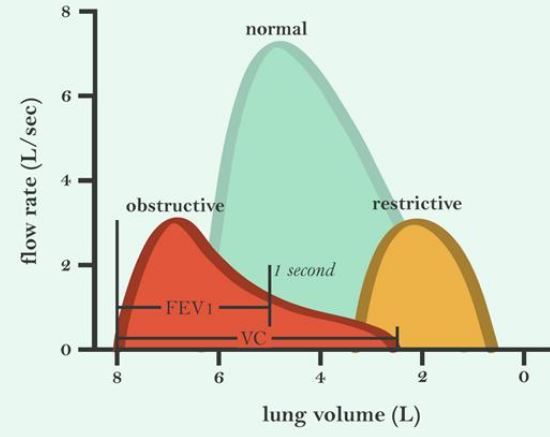COPD with obstruction: Death 1.7 X more likely with low vitamin D
Airway obstruction, serum vitamin D and mortality in a 33-year follow-up study
European Journal of Clinical Nutrition, https://doi.org/10.1038/s41430-018-0299-3
Tiina Mattila tiina.m.mattila@fimnet.fi, Tuula Vasankari, Harri Rissanen, Paul Knekt, Laura Sares-Jäske, Tuija Jääskeläinen & Markku Heliövaara

 ---
1. Breathing category starts with the following
{include}
---
Note: Cannot exhale = obstructive, Cannot inhale = restrictive
A few images from the web
---
1. Breathing category starts with the following
{include}
---
Note: Cannot exhale = obstructive, Cannot inhale = restrictive
A few images from the web



PDF is available free at Sci-Hub 10.1038/s41430-018-0299-3
Background and objective:
Chronic obstructive pulmonary disease and low vitamin D status predict mortality, but their combined effect on mortality remains inconclusive. We aimed to investigate a joint effect of airway obstruction and vitamin D status on mortality in a nationally representative cohort.
Methods:
We analysed data of 6676 Finnish adults participating between 1978 and 1980 in a national health examination survey, undergoing spirometry and having all necessary data collected. We followed them up in national registers through record linkage until 31 December 2011. We categorised the subjects with obstruction using the lower limit of normal (LLN) and the measured serum 25-hydroxyvitamin-D (s-25(OH)D) into tertiles.
Results:
Both obstruction and low s-25(OH)D independently predicted mortality in a multivariate model adjusted also for age, sex, smoking, education, leisure physical activity, body mass index, asthma and serum C-reactive protein. However, a statistically significant (p = 0.007) interaction emerged: the adjusted mortality HRs (95% CI’s) for s-25(OH)D in tertiles among the subjects without and with obstruction were 1.00 (lowest), 0.96 (0.87–1.05) and 0.89 (0.81–0.98); and 1.00, 0.96 (0.71–1.31) and 0.57 (0.40–0.80), respectively.
Conclusions:
In conclusion, obstruction and low s-25(OH)D predict mortality independently of each other. Our findings suggest that low vitamin D status might be particularly detrimental among subjects with obstruction.
